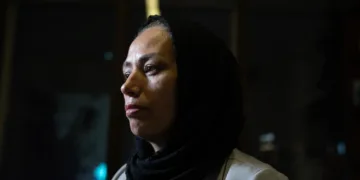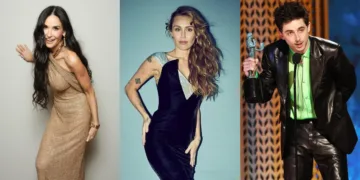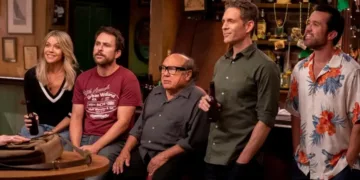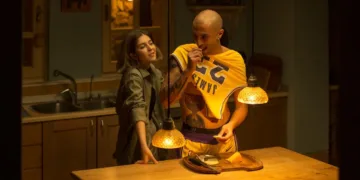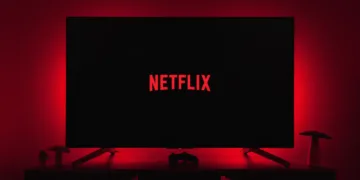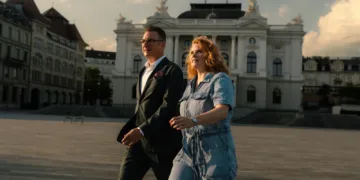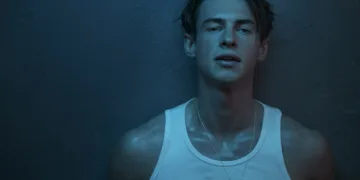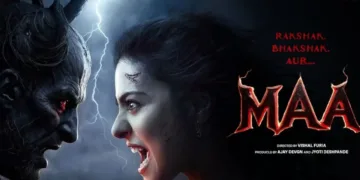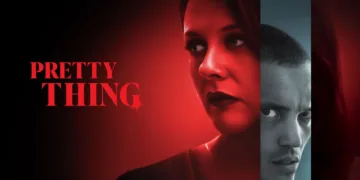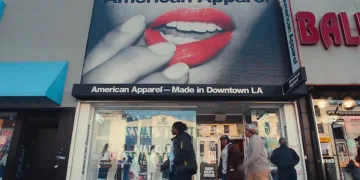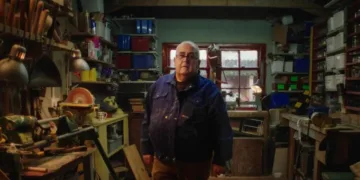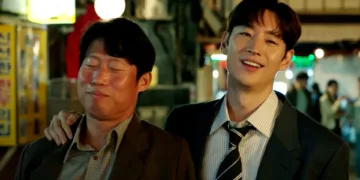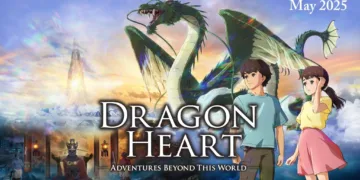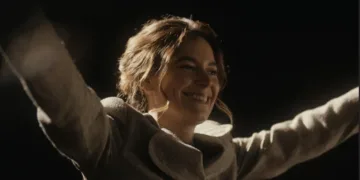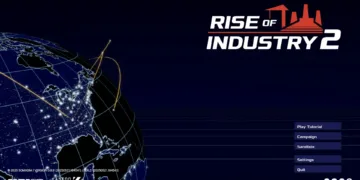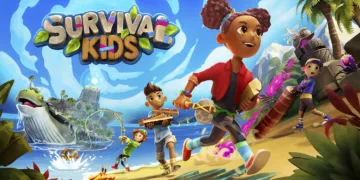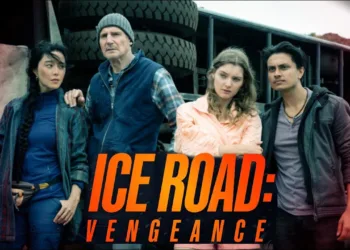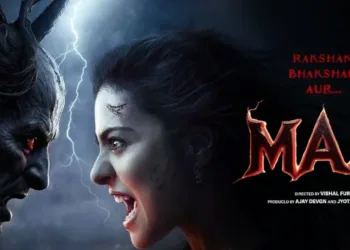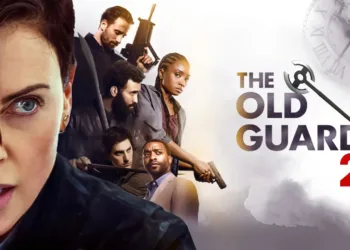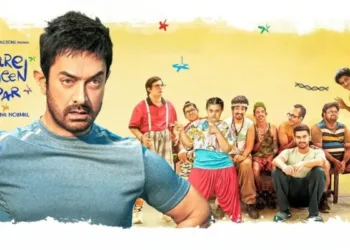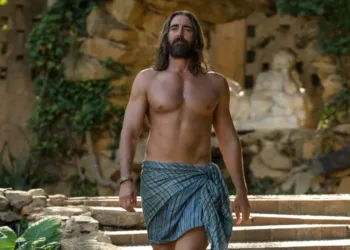The film opens with a life hanging by a thread, suspended not by a court’s final decree but by the will of a grieving family. In Iran, Tahereh has served a fourteen-year prison sentence for killing her husband. Now released on a temporary parole, her existence is not her own, and the streets of Tehran offer a precarious and conditional freedom.
Her fate lies with a specific tenet of Iranian Sharia law: the deeply personal practice of qisas (retribution) and diya (blood money). Here, the state steps back and places the power of life and death into the hands of the victim’s family. They alone can demand the execution of the perpetrator, or they can choose to grant forgiveness in exchange for a negotiated financial payment.
The film immediately establishes these harrowing, life-or-death stakes. Tahereh’s future rests entirely on the judgment of her late husband’s brother, Bashir, creating an almost unbearable emotional and legal predicament from the very first frame.
Portraits of Grief and Vengeance
The documentary presents two families caught in a devastating bind, each a mirror image of the other’s loss. Tahereh herself is a figure of quiet, almost unnerving defiance. She shows no remorse for killing the man she consistently describes as an abusive, violent drug addict, viewing his death as a necessary act of liberation for herself and her children.
This lack of repentance informs her calm resignation; she seems prepared to accept a death sentence if it comes, a stance that creates a painful rift with her son, Mohsen. He frantically works to save the mother he feels should be fighting for herself, his youthful desperation a stark contrast to her weathered stoicism.
On the other side is Bashir, the victim’s brother, who must make the final, terrible choice. He is not depicted as a simple antagonist but as a man crushed by circumstance. He wrestles with his mother’s relentless demands for execution, his own profound grief, and the practical lure of a financial settlement that could significantly aid his own struggling family.
The film’s approach avoids clear heroes or villains, a method that finds a kinship with the social realism of India’s parallel cinema movement. Much like the characters in a Shyam Benegal or Govind Nihalani film, these are ordinary people forced into impossible ethical positions by an unyielding system. The raw, unvarnished look at family dynamics under extreme pressure, stripped of melodrama, allows for a much harder and more universal truth to emerge.
The Weight of Law, The Shadow of Doubt
The film examines a legal system that grants men like Bashir immense authority while offering few protections to women like Tahereh. The critical background detail that it is nearly impossible for a woman in Iran to obtain a divorce from an abusive husband colors every aspect of Tahereh’s past actions and present predicament.
It reframes her crime from a simple act of malice to one of desperation. Simultaneously, the documentary introduces a true-crime mystery that it consciously refuses to solve. The details of the murder are murky and conflicting.
There are the initial confessions from Tahereh’s daughters, which were later recanted. There is police skepticism that one woman and her children could have moved a body and professionally buried it under a concrete floor without male assistance. An unseen man named Hamed is mentioned as a person of interest.
The filmmakers pointedly do not pursue a definitive version of the truth, subverting the expectations of a global audience hungry for the clear-cut resolutions of the true-crime genre. This directorial choice poses a key question: are the specific facts of a fourteen-year-old crime relevant to the moral dilemma of today?
Amid this patriarchal structure, strong female figures emerge as points of resistance. Tahereh’s assertive lawyer and dedicated anti-execution activists operate with courage within the system, their presence a sharp contrast to the all-male judicial figures who hold institutional power.
The Cost of Forgiveness
The final act is a masterclass in tension as Tahereh’s family scrambles to raise the required blood money against a ticking clock. The filmmaking here is intensely personal and raw.
The camera stays uncomfortably close during the painful negotiations, capturing every pleading glance, every strained argument, every moment of tearful collapse with an intimacy that makes the viewer feel like an intrusive observer.
This direct cinema technique drops us into the claustrophobic center of a family’s crisis, making their anxiety palpable. The film’s resolution, when it arrives, is not a moment of clean relief or simple victory; it is marked by a hollow, unsettling quiet that speaks volumes. It is a peace that feels purchased rather than achieved.
The film provides no simple answers, leaving one to ponder the difficult questions it raises about the very nature of justice. What is its true meaning when a life has a price tag? Can forgiveness be considered authentic when it is a financial transaction? How do families carry on after a life has been bartered? The story ends, but its profound inquiries hang heavy in the air.
An Eye for an Eye is an 84-minute documentary that premiered at the Tribeca Film Festival on June 5, 2025—earning a Special Jury Mention and Best Editing recognition.
Full Credits
Director: Tanaz Eshaghian, Farzad Jafari
Producers and Executive Producers: Christoph Jörg, Katayoun Arsanjani, Joey Marra
Cast / Featured: Tahereh, Mohsen and family, legal representatives, participants in the diya negotiation
Director of Photography (Cinematographers): Gelareh Kiazand, Ali Jalali
Editors: Soren B. Ebbe, Hayedeh Safiyari
Composer: Kristian Eidnes Andersen
The Review
An Eye for an Eye
An Eye for an Eye is a stark and deeply human documentary. It presents a raw, intimate portrait of families caught in an impossible moral and legal bind, forgoing simple judgment. The film's unflinching closeness is difficult, but its refusal to provide easy answers about justice and mercy makes it an essential viewing experience. The film presents a harrowing situation with profound ethical questions that linger.
PROS
- Offers a rare, intimate look at Iran's system of retribution and blood money.
- Presents its subjects with deep empathy, avoiding simple hero or villain archetypes.
- Intelligent filmmaking that subverts the expectations of the true-crime genre.
- Raises profound questions about the nature of justice, forgiveness, and mercy.
CONS
- The raw, up-close filming of emotional distress can be uncomfortable to watch.
- Its deliberate refusal to solve the central crime may frustrate some viewers.
- The subject matter is emotionally heavy and offers no easy sense of closure.
